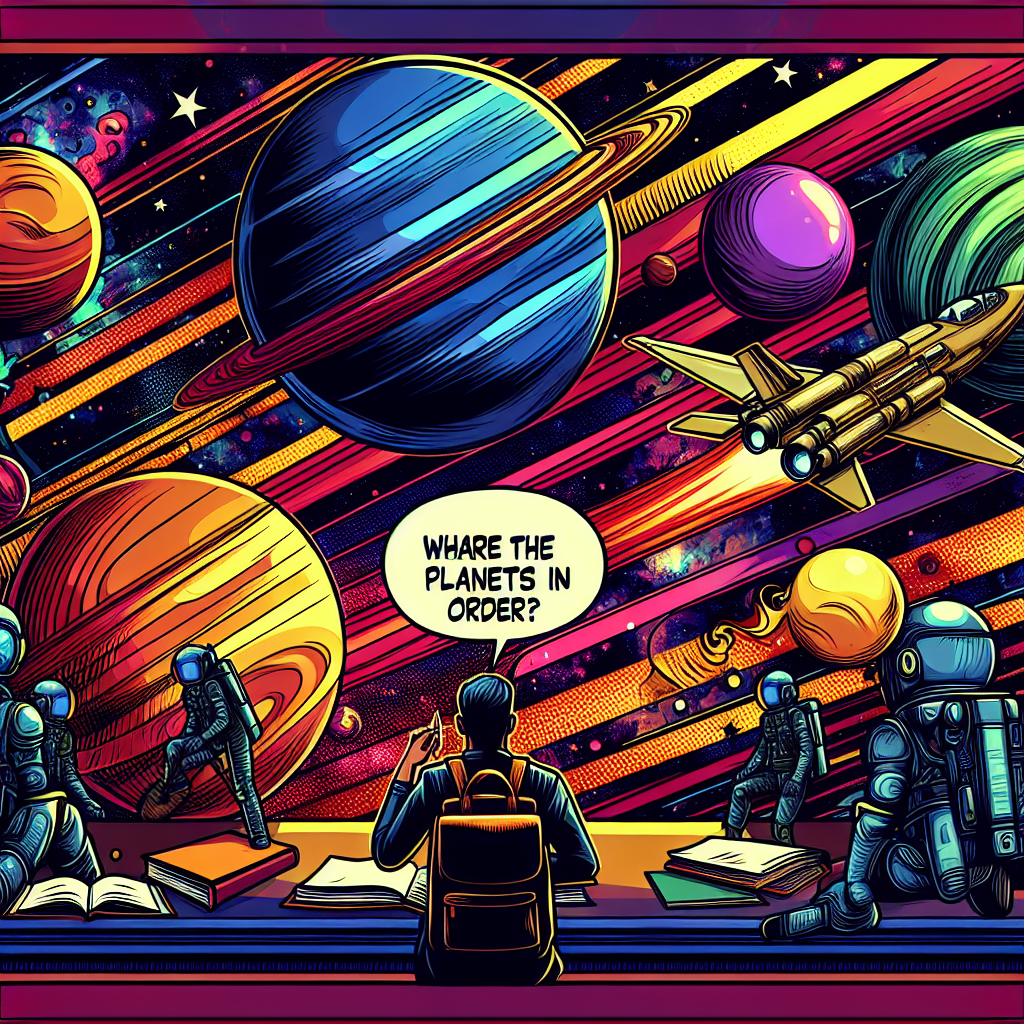Our solar system is a sprawling cosmic neighborhood, with eight planets, each unique in its own way. Imagine a giant dinner table, where each planet is a distinct dish, carefully arranged in a specific order. Just as you wouldn't serve dessert before the main course, the planets follow a specific sequence, determined by their distance from the sun.
Starting from the sun, the first planet is Mercury. This tiny, rocky world is like a hot skillet, scorching hot during the day and freezing cold at night. Its proximity to the sun means it whizzes around our star in just 88 Earth days, making it the fastest-moving planet.
Next up is Venus, often shrouded in thick clouds of sulfuric acid and droplets of sulfuric acid. This veiled world is like a steamy kitchen, with surface temperatures reaching as high as 462°C (863°F). Despite the extreme conditions, NASA's Magellan spacecraft was able to map Venus' surface, revealing over 1,600 major volcanoes.
Earth, our home sweet home, is the only known haven for life in the universe. It's like a comfortable living room, with the perfect distance from the sun and an atmosphere that's just right for life to flourish. Our planet takes 365.25 days to complete one orbit around the sun, which is why we have a leap year every four years.
Mars, the Red Planet, is like a rugged, barren landscape, with its rusty red hue and towering mountains. This unforgiving world has captivated human imagination, with many considering it a potential candidate for supporting life. Mars takes about 687 Earth days to complete one orbit, which is why it appears to move slowly in the night sky.
The asteroid belt, a region of small rocky bodies, separates the inner rocky planets from the outer gas giants. Think of it as a celestial highway, where millions of small, rocky objects orbit the sun, ranging in size from boulders to hundreds of kilometers across.
Now, we enter the realm of the gas giants, starting with Jupiter, the largest planet in our solar system. This gaseous behemoth is like a massive balloon, made mostly of hydrogen and helium, with storm systems that can be thousands of kilometers wide. Jupiter takes about 12 Earth years to complete one orbit, which is why it appears to move slowly in the night sky.
Saturn, another gas giant, is like a stunning beauty, with its prominent ring system made of ice and rock particles. These delicate, lace-like rings stretch across hundreds of thousands of kilometers, a breathtaking sight in the cosmos. Saturn takes about 29.5 Earth years to complete one orbit, which is why it appears to move slowly in the night sky.
Uranus, the tilted planet, is like a spinning top, with its axis tilted at a whopping 98 degrees. This distant world has a thick atmosphere, mostly composed of hydrogen, helium, and methane, which gives it a distinct blue-green color. Uranus takes about 84 Earth years to complete one orbit, which is why it appears to move slowly in the night sky.
Neptune, the farthest planet from the sun, is like a cold, dark winter night, with temperatures reaching as low as -224°C (-371°F). This icy giant has the strongest winds in the solar system, with gusts reaching up to 2,100 kilometers per hour (1,300 miles per hour). Neptune takes about 165 Earth years to complete one orbit, which is why it appears to move slowly in the night sky.
To recap, the order of the planets in our solar system is:
- Mercury
- Venus
- Earth
- Mars
- Jupiter
- Saturn
- Uranus
- Neptune
Each planet, unique in its own way, contributes to the rich tapestry of our cosmic neighborhood. By understanding their distinct characteristics, we gain a deeper appreciation for the intricate dance of celestial bodies that make up our solar system.

Popular Space Questions
Find answers to the trending space questions being asked by our community on social media.
- How many galaxies are there in the universe?
- How far is Pluto from Earth?
- How many planets are in the Milky Way?
- What would happen if a rogue planet entered our solar system?
- How many planets are in our solar system?
- How big is the Earth?
- What are the planets in order?
- What if we found a way to manipulate gravity?
- What would happen if a pulsar's beam hit Earth?
- How big is the universe?